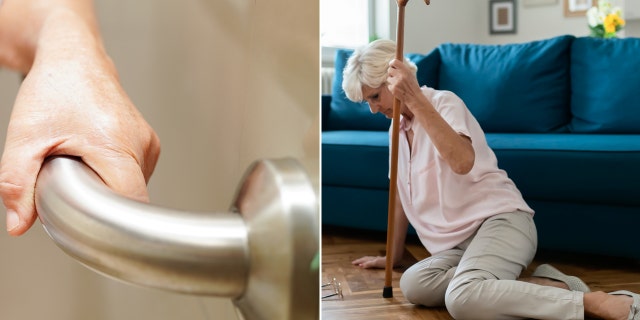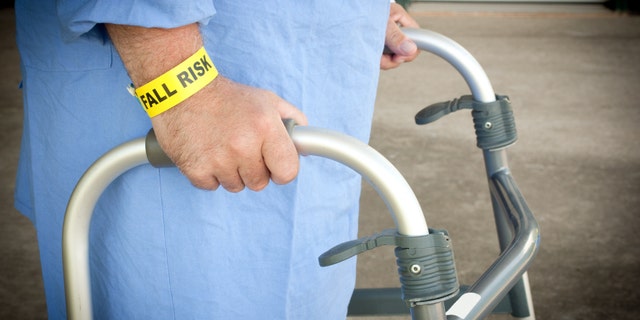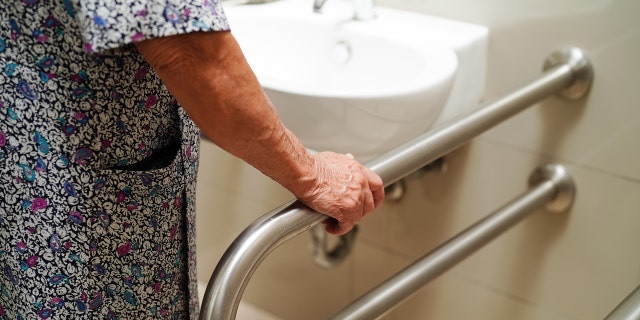
More than one out of four older people experience a fall each year — and three million of them are treated in the emergency room for their injuries, according to statistics from the Centers for Disease Control and Prevention (CDC).
“The most common injury after a fall is a fracture, in particular of the hip, wrist, spine and arm,” Christynne Helfrich, PT, a physical therapist commercial consultant for Hinge Health in Illinois, told Fox News Digital. “Hip fractures are a major concern, as they can significantly impact mobility and independence.”
Head injuries, which can range from mild bumps and bruises to traumatic brain injury, are another potentially dangerous outcome.
ALZHEIMER’S DISEASE: EARLY SIGNS AND SYMPTOMS YOU MAY SPOT IN YOURSELF OR A LOVED ONE
To help reduce falling risk, Helfrich shared the below safety and prevention tips.
Be physically active every day
Going for daily walks or engaging in other low-impact physical activities can help to strengthen muscles, keep joints flexible and maintain overall endurance, Helfrich said.
“By finding ways to stay physically active each day, older adults can greatly improve their ability to live independently and with full function while decreasing their risk of falling,” she said.

More than one in four older people experience a fall each year, and three million of them are treated in the emergency room for their injuries. There are steps people can take every day to stay stronger. (iStock)
Finding an activity that you enjoy — whether it’s swimming, yoga or Tai Chai — is the key to staying engaged and making it a daily habit, Helfrich added.
Make necessary home modifications
Sixty percent of falls happen inside the home, according to the National Council on Aging (NCOA) — which highlights the importance of making homes as safe as possible for older people.
DAILY USE OF LOW-DOSE ASPIRIN MAY INCREASE ANEMIA RISK IN HEALTHY OLDER ADULTS: STUDY
“Using brighter lighting and removing clutter on the floor will help keep you on your feet,” Helfrich said.
“It can also be helpful to add grab bars in the bathroom, where there are slippery surfaces that can increase the risk of falling.”
Other tips include removing rugs that could pose tripping hazards, adding railings to staircases and installing ramps as needed.
Talk with your doctor
Less than half of older adults who experience a fall don’t tell their doctors about it, the CDC reports — but discussing fall prevention with health care providers can be life-saving, Helfrich said.

Less than half of older adults who experience a fall don’t tell their doctors about it, the CDC reports. (iStock)
“Your doctor can refer you to physical therapy or a local fall prevention program,” she told Fox News Digital.
She said health care providers “can also review your current medications to determine whether [these] might cause a loss of balance as a side effect.”
The CDC also recommends asking a health care provider about taking vitamin D supplements, as some studies have found they can help reduce falling risk.
CLICK HERE TO SIGN UP FOR OUR HEALTH NEWSLETTER
Staying up to date on eye exams is also critical, Helfrich added, since vision is critical in determining where the body is in the environment and helping with orientation.
Get up slowly
Standing up too quickly can result in a phenomenon called ortostatic hypotension, which is when blood pressure drops too quickly and causes dizziness.
“As you age, blood pressure changes can cause you to feel dizzy if you move positions too quickly, which can increase your risk of falling,” Helfrich said.

Making home modifications, such as installing grab bars in bathrooms, can help reduce the risk of falls. (iStock)
“Take your time when getting out of bed or out of your chair to prevent this from happening,” she said.
Stay well-rested
Older adults are more prone to experiencing fatigue, which can make them more susceptible to falling, multiple studies have shown.
CLICK HERE TO GET THE FOX NEWS APP
“Making sure you get enough sleep at night is really important in helping your body recover from the previous day,” Helfrich said.
To read more pieces in Fox News Digital’s “Be Well” series, click here.

 Latest Breaking News Online News Portal
Latest Breaking News Online News Portal




